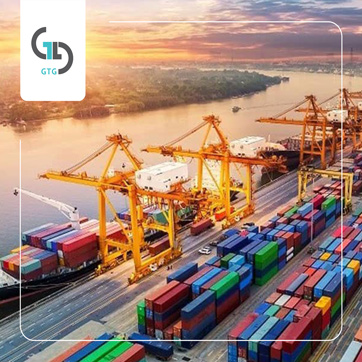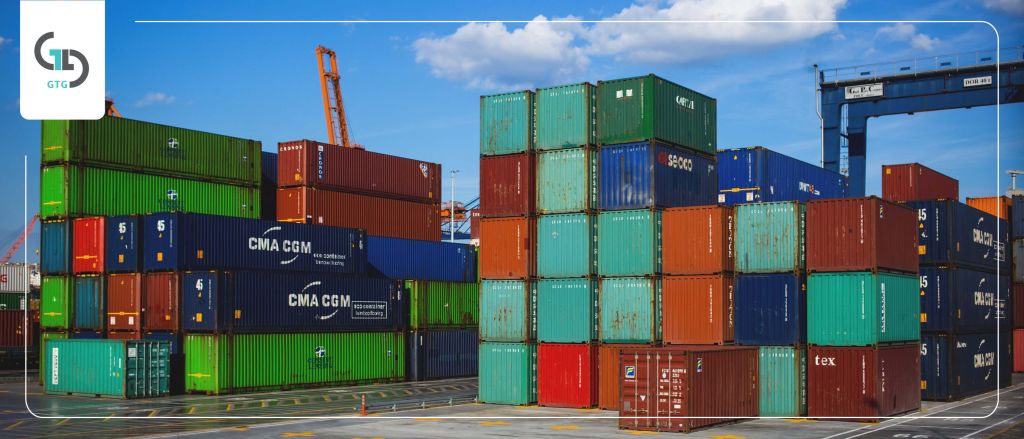
Iranian free trade zones are the ones that are usually located near borders and customs. The attraction of both domestic and foreign investments in these zones is increasing along with the increasing economic growth. In the present paper, we seek to discuss the significance of investment in Iranian free trade zones.

Introduction of Iranian free trade zones
Everyone has a particular definition and perception of a free trade zone. Anyway, what is a free trade zone really like? What facilities does it provide? How are investments made in these zones? Do the inhabitants of the zones profit from it?
A free trade zone is a zone with some exclusive prerogatives for exportation and importation. The customs laws are not practiced in the free trade zones and the zones usually produce goods with the purpose of exporting them.
At the present time, Iran has eight active free trade zone. The free trade zones of Kish, Qeshm, Maku, Aras, Arvand, Anzali, Chabahar, and the airport city of Imam Khomeini make up the total Iranian free trade zones. The Expediency Discernment Council has recently introduced seven other zones as some new free trade zones through a resolution. Mehran in Ilam Province, Sistan in Sistan and Baluchestan Province, Baneh-Marivan in Kurdistan Province, Bushehr in Bushehr Province, Qasr-e Shirin in Kermanshah Province, and Ardabil in Ardabil Province and Inche Boroon in Golestan Province are some of these zones. In the following, some of these zones will be introduced:
Kish free trade zone:
Kish Island is considered by Iranians as a resort and a site for attending concerts. This Island attracts millions of tourists annually through its pristine and beautiful nature, and also clean and unique coast. This Island has also attracted some tourists during the coronavirus pandemic! The nearness of Kish Island to rich countries that have a coastline on the Persian Gulf, and their markets have opened up some special opportunities on this Island for the investors. Kish Island has the most powerful drilling technology. Kish Island operates in the field of tourism, banking, overseas medical services, electronic industries and supporting services concerning oil Kish zone has a capacity of $590 million foreign investment.
Qeshm free trade zone:
Investment in free trade zones
Qeshm Island is also one of the beautiful and pure Islands in the Persian Gulf. This Island is known by Iranians as the center for the whole purchase. A large number of business owners in the field of garment and clothing go to this Island for the purpose of mass buying. This Island, which is the largest island in the Persian Gulf, plays an important role in trade and it is considered to be a good site for investment due to being located on a transit corridor as well as having huge oil and gas reservoirs around it.
Most of the activities conducted on this Island are in the field of biological technologies. The activities in this zone are in the field of the transportation industry, energy-consuming industries, supporting services concerning oil, trade, and trade services, biotechnological and marine technologies, fishery industries, and energy parks. The productions of this Island is worth $93 million. This Island can provide some advantages for large ships with a capacity of over 100 tons due to its access to international water and large ports.

Maku free trade zone:
Maku city located in the Northwest of Iran is known as the youngest and vastest free trade zone in Iran due to being adjacent to Caucasus countries and bordering with Turkey. This zone is also of special importance to Iranians due to being near to the markets of commonwealth independent countries. Most of the commercial activities in Maku are in the field of transportation and goods transit. Business and business services, tourism industry, processing, and agricultural industries, and large cultivation and industry units are some of the other activities done in Maku free trade zone. This zone has a potential investment value of $210 million.
Chabahar free trade zone:
Investment in free trade zones
Chabahar is a port city located in the southeast of Iran. The natural and biological environment of this zone attracts a lot of tourists to Chabahar. Chabahar on the one side accesses the Oman Sea and the Indian Ocean and accesses Central Asia and Afghanistan on the other side. Most of the activities in this zone are connected with re-exports. This zone is known as energy hub, business hub of east of Iran, strategic goods storage site, food industry cluster, Iran’s third pole of the automotive industry, transit axis of Central Asia and Afghanistan, productions based on sea-based economy and services in the field of ICT. Chabahar zone has a potential investment value of $9.3 million.
Anzali free trade zone
Investment in free trade zones
Anzali zone in Gilan Province is located on the coastline of the Caspian Sea. This zone has a significant role Iran-Russia trade due to bordering with Russia. On the other hand, the nearness of this city to Gilan have made the tourists coming to visit Gilan to make a visit to it too. This has led to some tendencies to change its name from Anzali free trade zone to Gilan free trade zone. Most of the activities in the Anzali free trade zone are done in the field of the garment. The transportation industry, tourism industry, clean industries, current business and services, processing and agricultural industries are some of the other activities performed in this zone. Anzali zone has a potential investment value of $9.3 million.
Aras free trade zone:
Aras free trade zone in the northeast of Iran and bordering with Armenia, Azerbaijan, and Nakhchivan. This zone has a great capability to attract tourists due to having rich natural resources, good weather, and historical and cultural attractions. Also, it covers the consumption market in the Northwest of Iran due to having road, railway, and airway infrastructures. Most of the activities of Aras zone are done in the field of business and business services, super-specialty therapeutic facilities, tourism activities, transportation industry, development of agriculture, animal husbandry, and clean industries. Aras zone has a potential foreign investment value of $82 million and a domestic investment value of $518 million.
Arvand free trade zone:
Arvand city in the South of Iran that is very near to Iraq and Kuwait. If you happen to ever have a trip to this city, you get to know that even your cell phone signal is transferred to Iraq. The main activities in this zone are done in the field of refinery industries. The agriculture and fishery industries, sea installation, clean industries, and tourism industry are also some other activities in this field. This zone has a potential foreign investment value of $53 million. Also, the export volume of this zone may increase up to $1220 million.
Investment in free trade zone:
The purpose of attracting foreign and domestic investors to the free trade zone is to abandon an inward-looking economy for the sake of an outward-looking one. Unfortunately, since Iran is considered to be a single-product country, it tries to attract the maximum number of domestic and especially foreign investors. It is possible to do different investments in these zones, including founding different factories like glass-making factories, ice cream factories, kraft paper factories, galvanized sheet factories, fish farming complex, establishing small refineries, treatment centers like cosmetic surgery centers, eye clinics, hotels, hospitals, etc.
The choice you make as to which free trade zone to invest in completely depends on your own conditions. That which zone is the nearest one to you, which zone you are most familiar with in terms of customs and culture, you have a relatively good command of Azari, Arabic, or Russian, or if you yourself like a zone or not are the factor to take into account as conducting a comprehensive examination of all relevant factors to make a good decision as to the type of investment and the place where you invest.
Investment laws in Iranian free trade zones:
According to article 2 of the decree concerning investment regulations in free trade zones, all real and legal persons and institutions including both Iranian and foreign and international organizations can invest independently or jointly in free trade zones.
The investment can be made through cash in rial or exchangeable currencies, machinery or work equipment, industrial property rights, different types of road, railway, and airway transportation vehicles. In some particular cases, the raw materials and semi-manufactured parts may also be considered as foreign capital in some particular cases.
The investors can also insure their capital, but they are only entitled to receive compensation for the damage they have suffered in case of any damage, and it is not considered as a component of their capital. You should also know that the capital is accepted if it is used for the activities required in the zone (the major activities in each zone have been mentioned in full). Note that you need to obtain an investment license before starting to make investments. This license is issued by a certain organization appointed to run each particular free trade zone.
For more information on investment, details click Here or go to the Islamic Parliament Research Center of The Islamic Republic Of IRAN website.
Iranian special trade zones
Iran has also some special economic zones as well as free trade zones. The laws practiced in special economic zones involve fewer limitations compared to other parts of the country. In fact, some appropriate conditions have been prepared in these zones for the entrepreneurs to start operating.
In the following, we will introduce all special economic zones in Iran:
East Azerbaijan Province
- Sahand Maraghe special economic zone
- Sahlan special economic zone
West Azerbaijan Province
- Sarv special economic zone, Urmia
Ardabil Province
- Nir special economic zone
- MeshginShahr special economic zone
- Garmi special economic zone
- Khalkhal special economic zone
Isfahan Province
- Shahinshahr special economic zone
- Freydoun special economic zone
Alborz Province
- Payam special economic zone
- Savejbolagh
Bushehr Province
- Bushehr special economic zone
- Pars special economic zone
Tehran Province
- Imam Khomeini airport city
- Parand special economic zone
- Rey special economic zone
Razavi Khorasan Province
- Special economic zone, Sabzevar
- Special economic zone, Sarakhs
- Special economic zone, Dogharoon
- Special economic zone, Quchan
- Special economic zone, Kashmar
- Special economic zone, Khavaf
Khuzestan Province
- Petrochemical special economic zone, Bandar-e Mahshahr
- Special economic zone, Masjed Soleyman
Zanjan Province
- Special economic zone, Zanjan
Semnan Province
- Special economic zone, Garmsar
Sistan and Baluchestan
- Special economic zone, Sistan
- Free trade zone, Zahak
Fars Province
- Special economic zone, Shiraz
- Special economic zone, Jahrom
Qazvin Province
- Special economic zone, Takestan
Kerman Province
- Special economic zone, Sirjan
- Special economic zone, Golgohar
- Special economic zone, Arg-e Jadid
- Special economic zone, Rafsanjan
- Special economic zone, Jazmorian
- Special economic zone, Shahr-e Babak
Kermanshah Province
- Special economic zone, Eslamabad-e-Gharb
- Free trade zone and special economic zone, Ghasr-e Shirin
Kohgiluyeh and Boyer-Ahmad Province
- Gachsaran
Gilan Province
- Special economic zone, Astara Port
- Special economic zone, Fuman
- Fuman county
- Special economic zone, Bandar-e Kiashahr
Lorestan Province
- Special economic zone, Azna
- Special economic zone, Borujerd
- Special economic zone, Khorramabad
Mazandaran Province
- Special economic zone, Bandar-e Noshahr
- Special economic zone, Fereydunkenar
- Special economic zone, Mahmudabad
- Special economic zone, Amol
Markazi Province
- Iranian special economic zone
- Kaveh special economic zone
Hormozgan Province
- Khalij-e Fars special economic zone
- Shahid Rajai special economic zone
- Parsian special economic zone
- Jazireh-ye Lavan special economic zone
Yazd Province
- Special economic zone, Yazd
- Special economic zone, Abarkuh
- Special economic zone, Bafgh
- Meybod pecial economic zone, Meybod County
- Special economic zone, Mehriz
- Special economic zone, Large industrial estate of Yazd
Difference between free trade zones and special economic zones
Iranian free trade zones and special economic zones have been established with the purpose of making the economy and industry grow, increasing employment, attracting foreign investors, increasing exportation, gaining foreign exchange revenue, and helping to control inflation. However, the rules and regulations adopted by each zone are different from those of others such that the economic activities in free trade zones are much more attractive than those of special economic zones.
Some customs and tax exemptions, decreasing them to zero or to very low fees, have been implemented to encourage businessmen to invest. A 15-year period of tax exemption has been provided in free trade zones, but it is different from that of the special economic zone in that the tax discount in special economic zones is provided according to the regulations practiced all around the country. This indicates that the special economic zones are not totally exempted like free trade zones.
Also, the customs duties have been eliminated in free trade zones by implementing a duty relief plan, but the duty relief in special zones depends on the field of specialized activity.
It is possible for both domestic and foreign nationals to retail, while only the foreign nationals can retail in special zones.
In the free trade zones, the regulations concerning getting a visa for foreign nationals are considered to be based on border regulations, while in special zones, this is done according to the rules and regulations practiced in the country.
In free zones, some particular facilities have been adopted to provide employment and social security insurance to foreign nationals, but these rules abide by the rules mandated by the labor laws for the foreign nationals that are practiced across the country.
In the free trade zones, the foreign investors can fully own the production units and they are also free concerning capital inflows and outflows.
In free trade zones, the entry and exit of goods are performed with a limited number of administrative formalities, and a set of simple regulations have been adopted as to the legal entry of all goods. As for the special economic zones, some special facilities have been also provided, but the level of these facilities is lower than those of free trade zones. Also, the importation of the production line and the administrative tools and furniture is done in the special economic zone and the production license and the certificate of completion are issued for free.
In these zones, there is to limit to the abandonment of goods, but more freedom and fewer strict rules have been adopted in free trade zones.

